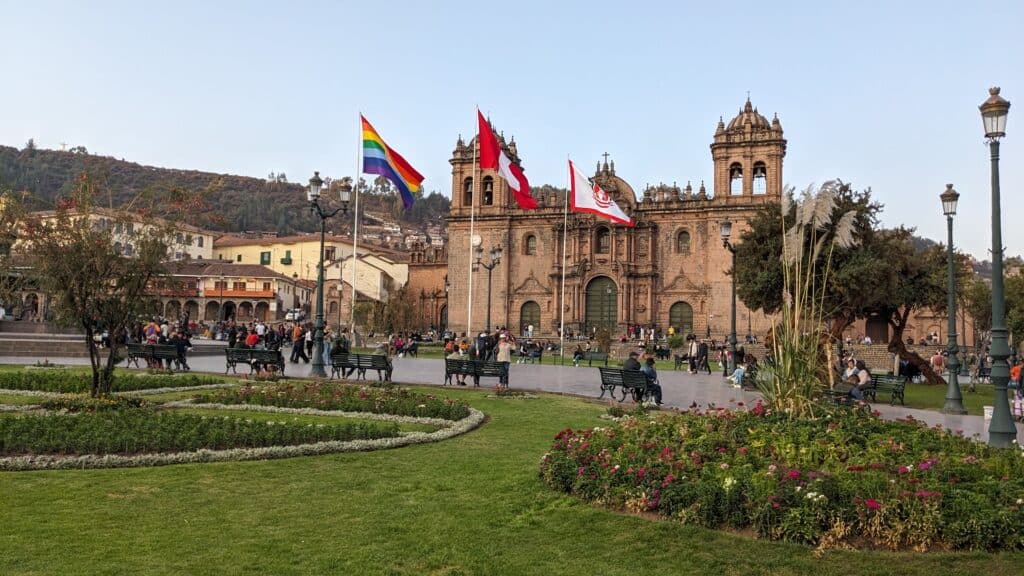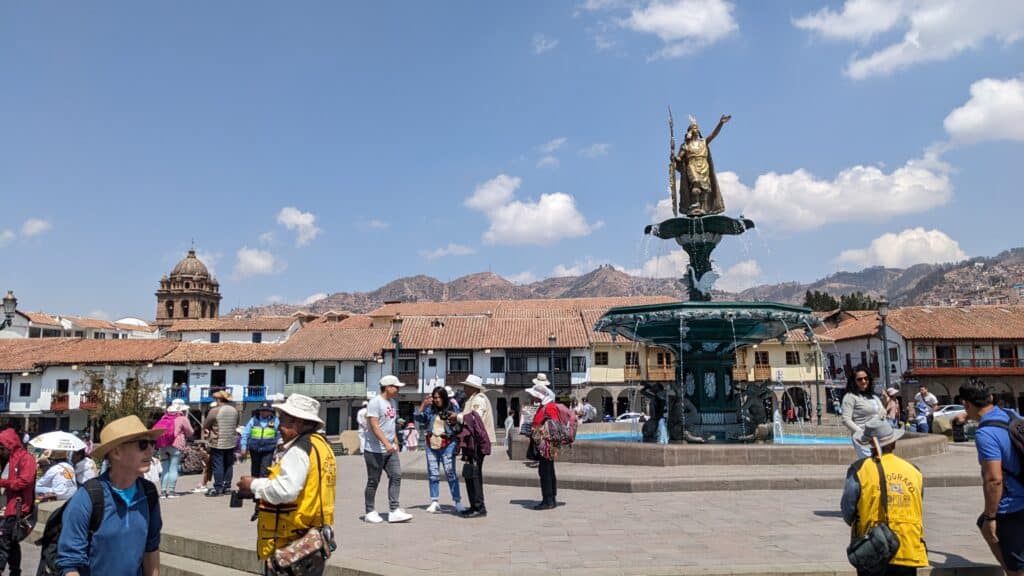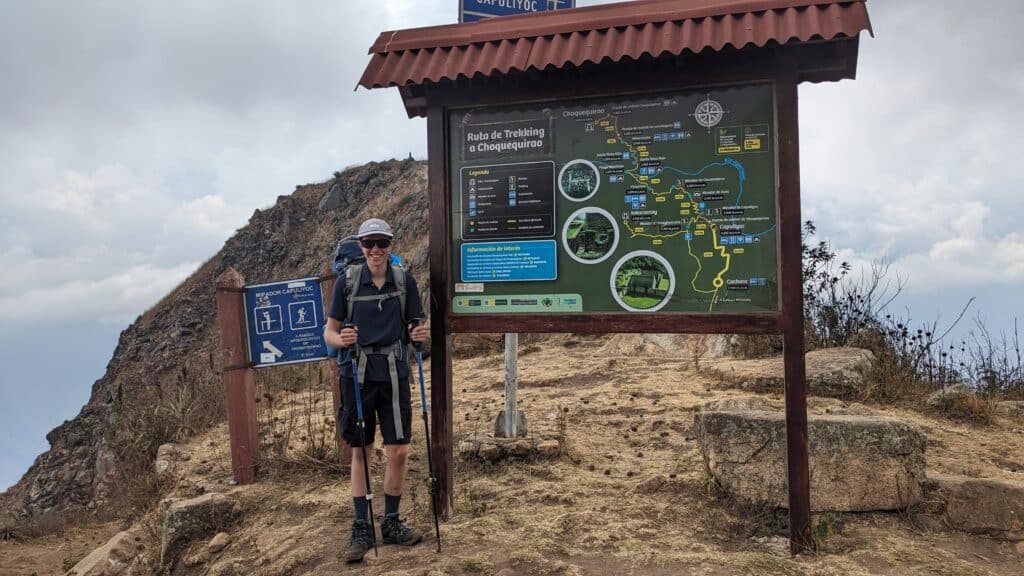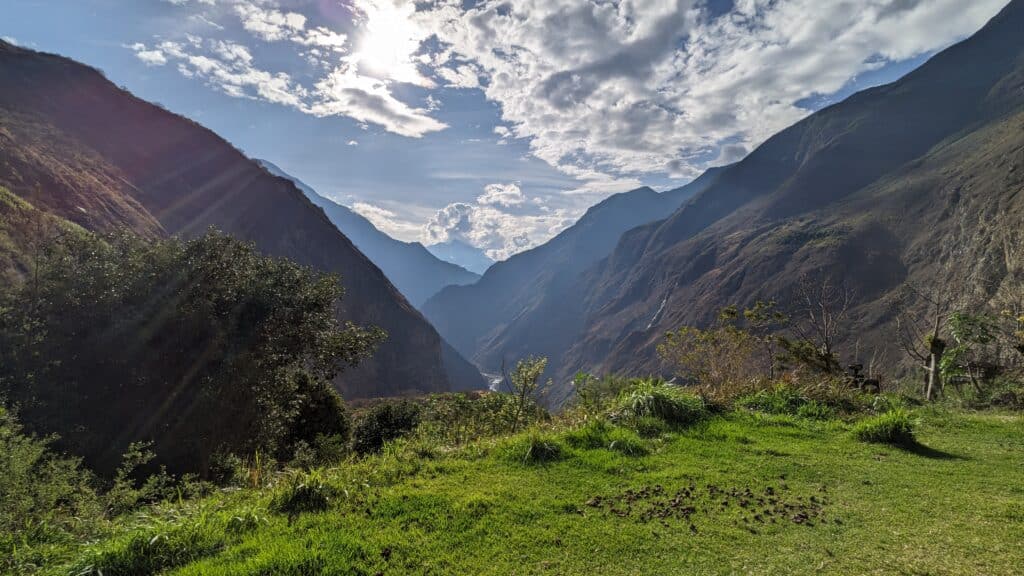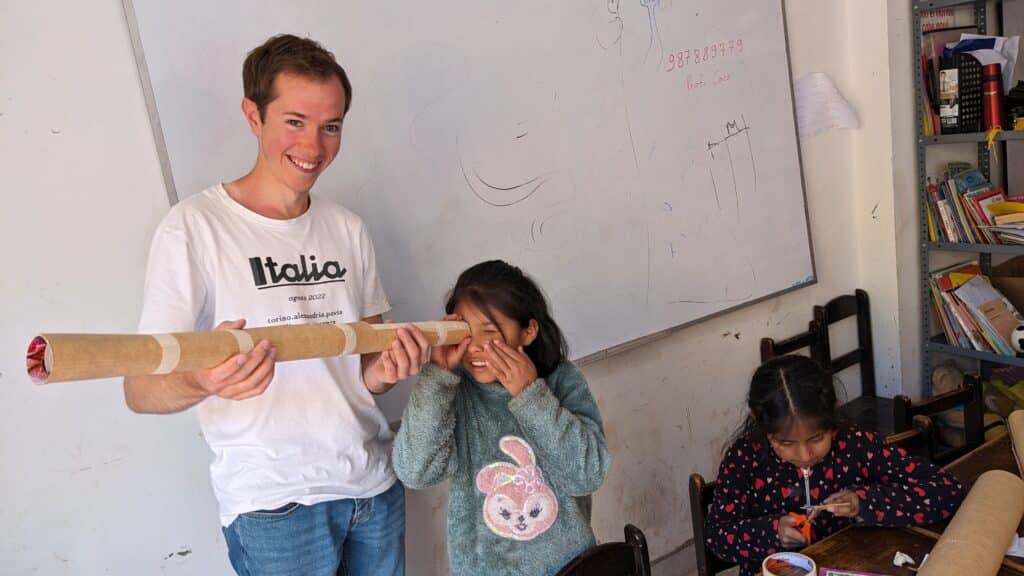The ruined city of Choquequirao, clinging to the side of a sheer mountain for hundreds of years, has enthralled me since I first heard about it around six years ago. The forgotten sister city of the popular Machu Picchu, its name is unjustly only read in fairly niche travel subreddits or blogs, despite being just as impressive and in just as spectacular a location as Machu Picchu. However, reading these descriptions soon makes you realise why it’s not talked about so much. Visiting Choquequirao requires undertaking an arduous four-to-five day round trip hike that, as treks go, is quite far from a gentle stroll. This deterrent means that the ruins see only a handful of visitors a day, compared to the thousands that stream through Machu Picchu. The thought of having this incredible scenery and unique historic site almost to myself lodged itself in my brain permanently.
Undertaking a trek to Choquequirao also meant that I would be able to visit an educational project that operates in the city of Cusco and at which I had volunteered in the past. This project provides an after-school care for children from a poor neighbourhood in the city, where they have a safe place to play and learn. I could bring some science-related toys with me from the UK, as the materials they have there are limited.
Arriving in Cusco, I spent the first couple of days acclimatising myself to the altitude and food. Despite needing to rest up, I still managed to see some tourist sites around the city. I also managed to meet up with the contact I had, named Coco, at the project I would be visiting. He was spending a day at a local family’s house, helping them with some small-scale renovation. So I took the bus out to the neighbourhood to visit the family and help out where I could. The state of the house came as quite a shock to me as it lacked many basic facilities, including a toilet. Coco told me that he wanted to help them set up a plumbing system that would allow them to build one, but this was still some way down the track. Several families lived in this area, so there were lots of children to entertain when I visited, and this turned out to be how I could be most useful.
The day after I started the long journey to Choquequirao. It began with a three-hour drive to the town of Cachora, which is the closest settlement to the trailhead. I had contacted a guide before arriving in Cusco who could accompany me on the hike, and I was to meet up with him shortly before jumping in a car that would take us to Cachora. This turned out to be a bit more stressful than I had bargained for though! Only a few hours before leaving, none of the travel arrangements had been sorted out and I was struggling to get in touch with my contact, Juan (who, it turned out, wasn’t going to be my guide after all but would be putting me in touch with the guide – his brother Christian)!
While Christian was a more reserved character, our driver was pretty jovial, helping break the ice a bit. At one point he joked “We call Choquequirao the gringo killer!” . We drove through towns and countryside. As we talked, I learnt that Christian actually grew up right next to Choquequirao, and that his family had been living in that remote location since the mid-19th century. He had played among the ruins growing up and his father had helped restore the site to its current state. I would have a true local for a guide!
It was dark when we arrived in Cachora. Along the trail we would be staying in lodges owned by Christian and Juan’s extended family and in fact, the night spent in Cachora was in one of these family members’ homes. The first day was the shortest day of hiking and all downhill, and we were lucky that the clouds were out, so it wasn’t too hot. Before getting going, Christian performed a small ritual in which he thanked Pachamama (Mother Earth) and asked for a safe passage, I said my own thanks before heading off too.
That day’s walking was quite relaxed and there was plenty of stopping to gawk at the condors soaring overhead. Before we arrived at our campsite, though, Christian noticed that my legs had been absolutely decimated by mosquitos and were dotted with pinpricks of blood. I had known that the mosquitos were going to be a problem but didn’t realise that they were going to be out at that altitude. Thanks to that, I hadn’t put any repellent on and as such, fed half the mosquito population of the region. It would turn out that these Andean mosquitos are a force to be reckoned with…
The next day was “the hard day” so we met for breakfast at 5:30 am with the aim to set off before sunrise, which we almost managed to do. The aim was to race the sun to the bottom of the valley, then cross the river and start the long walk back up the other side. The sun would only be hitting that slope in the mid-morning. The day started off well, but after crossing the river things got difficult. The ascent up the valley was completely unrelenting and while it began easy enough, after a couple of hours I was having to take a break every second switchback. By the time we reached the second lodge in the tiny village of Marampata I was overjoyed – I could have cried seeing the sign welcoming us.
We had the next day in its entirety to visit the archaeological site of Choquequirao. It was about an hours’ walk from Marampata to the ruins and on the way, we got a sense of how enormous this place was. Not only could we see Incan terraces cut into the mountain way below us, being worked on by archaeologists, but Christian told me that only about half of the site had been uncovered so far. Taking me off the path and into a thicket, Christian showed me what those sections looked like. He showed me the wall of one of the old agricultural terraces completely covered in vegetation and looking as the whole city would have looked before the reconstruction began in the 90s. Continuing along the path through this vegetation, we eventually arrived at the central plaza of Choquequirao. The experience of seeing that place was too incredible to put into words. I had been researching the site for years and looking for a way to get there ever since hearing about it. After all that time, it was completely surreal to be standing there among the stones whose photos I had seen so many times.
Christian showed me through several sectors of the city, including the “llama sector” where cartoon llamas were designed into the terrace walls, and he provided huge amounts of information as we went. The highlight of the day was having the privilege to just sit there in silence and soak in the location – a complete luxury compared to most tourist locations around the world! The lookout spots were hugely dramatic as well – from those points we could see all the way down the valley, almost to where we had started the hike.
We stayed that night in Marampata again. The mosquito bites from the first day had blown up into huge purple welts that itched like mad, making the going much tougher than it needed to be. After descending from Marampata to the river, we had a swim to cool off and to prepare for the short uphill section to Chiquisca in the blazing sun.. On the final day we ascended through clouds back to where we started the hike four and a half days earlier.
Once back in Cusco I stayed with Coco for a few nights and spent as much time as I could at his project. I brought with me some kits to make crystals and slime with the kids (they were fascinated by the slime in particular), and we also made some telescopes with cheap lenses I had bought here in the UK before leaving. The science-inspired activities provided a bit of a change to the normal routine for them and was very rewarding for me too.
This journey required more confidence and independence than any other I have undertaken, and I couldn’t believe I was given the opportunity to tick this incredible adventure off my bucket list. I hope that I will be able to use this as a springboard to a similar trip or volunteering opportunity in the future!
